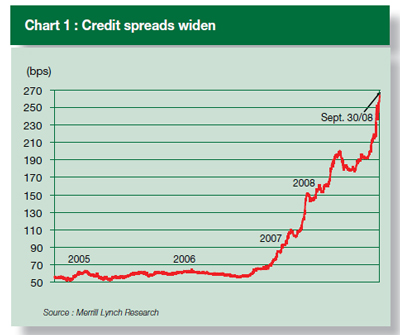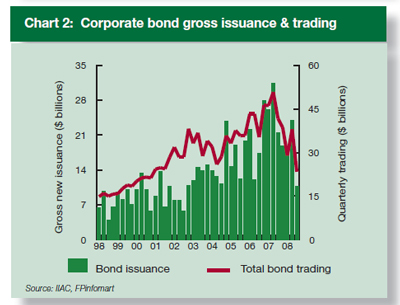Willem Buiter has an excellent blog post today advocating that the UK nationalize all “high-street” banks:
But even if the UK is not the next European country to face a sovereign debt challenge, there is a non-negligible risk that before too long, the growing exposure of the British sovereign to the banking system (and especially to the foreign currency funding risk faced by the UK banking system), together with the 9 and 10 percent of GDP general government fiscal deficits expected for the next couple of years, may prompt a loss of confidence by the global financial community in the British banks, currency and sovereign.
We may well witness the UK authorities going cap-in-hand to the IMF, the EU, the ECB and the fiscally super-solvent EU member states (if there are any left), prompted by a triple crisis (banking, sterling and sovereign debt), to request a bail out.
…
The balance sheets of the British banks are too large and the quality of the assets they hold too uncertain/dodgy, for the British government to be able to continue its current policy of extending its guarantees to ever-growing shares of the banks’ liabilities and assets, without this impairing the solvency of the sovereign.
…
Limiting the exposure of the sovereign to what is fiscally sustainable may imply giving up on saving (all of) the banks.
This builds upon his analysis of the Icelandic situation, which was discussed on November 5.
What caught my eye,however, was the massive numbers involved in British banking:
RBS, at the end of June 2008 had a balance sheet of just under two trillion pounds. The pro forma figure ws £1,730 bn, the statutory figure £1,948 (don’t ask). For reference, UK GDP is around £1,500 bn. Equity was £67 bn pro forma and £ 104bn statutory, respectively, giving leverage ratios of 25.8 (pro forma) and 18.7 (statutory), respectively.
…
Lloyds-TSB Group (now part of the Lloyds Banking Group) reported a balance sheet as of June 30, 2008 of £ 368 bn and shareholders equity of £11 bn, giving a leverage ratio of just over 33. Of course, for all these banks, the risk-adjusted assets to capital ratios are much lower, but because the risk-weightings depend both on private information of the banks (including internal models) and on the rating agencies, they are, in my view, worth nothing – they are the answer from the banks to the question “how much capital do you want to hold?”. That the answer is “not very much, really”, should not come as a surprise. For the same date, HBOS, the other half of the new Lloyds Banking Group, reported assets of £681 bn and equity of £21 bn, giving a leverage ratio of just over 32; Barclays reported total assets of £1,366 bn and shareholders equity of £33bn giving a leverage ratio of 41, and HSBC (including subsidiaries) reported assets of £2,547 bn and equity of £134 bn for a leverage ratio of 19.
The total balance sheets of these banks about to around 440% of annual UK GDP.
440%! While it must be remembered that a balance sheet is a measure of wealth, while GDP is a measure of income, this is a staggering figure anyway.
And let us not forget the mechanism whereby Royal Bank of Scotland got into trouble:
The scale of losses at RBS is breathtaking. The bank, which also owns NatWest, estimated that bad debts and writedowns on past acquisitions could leave it as much as £28 billion in the red for 2008, nearly double Vodafone’s record £15 billion loss in 2006.
The bank’s admission that it had paid between £15 billion and £20 billion too much for the Dutch bank ABN Amro last year prompted an angry response from Mr Brown.
The Prime Minister was furious that British taxpayers were now having to pay for losses that were incurred on foreign investments.
“Almost all their losses are in the sub-prime markets in America and related to the acquisition of the bank ABN Amro,” he said. “And these are irresponsible risks which were taken by a bank with people’s money in the United Kingdom.”
So, I took myself to the OSFI Bank Data Lookup Page and found that “Total All Banks CONSOLIDATED MONTHLY BALANCE SHEET” as of November 30 showed total assets of $3,213,563-million, supported by common equity of $122,117-million, preferred shares of $14,205-million, and sub-debt of $41,235-million (I’m pretty sure that OSFI’s line for sub-debt includes Innovative Tier 1 Capital). So, for quick comparison purposes, banks reporting to OSFI lever up their common equity with a ratio of 26:1 (total capital is levered up 18:1).
Also, Statistics Canada reports that Canada’s GDP at current prices is $1,639,540-million … so, rounding off a few million here and there, we arrive at a bank asset to GDP ratio of about 200% … well below the UK figure, even though the UK figure includes only their megabanks, while I have no reason to believe that the OSFI figure is not comprehensive.
It’s early days yet, but I’m beginning to wonder whether or not banking regulation should be rationed … Canada might say, for instance, “Only 300% of GDP will be allowed. Licences to purchase the right to have regulated – and implicitly protected – assets will be auctioned off annually for staggered 5- and 10-year terms.” Only a rough idea, but rough ideas are where good ideas come from … sometimes, eventually.
Such rationing runs the risk – if you want to call it that – of bloating the shadow-banking system, made up of things like non-banking leasing companies, payroll cheque cashing outfits, hedge funds and, currently, money market funds but that is not necessarily a bad thing.

